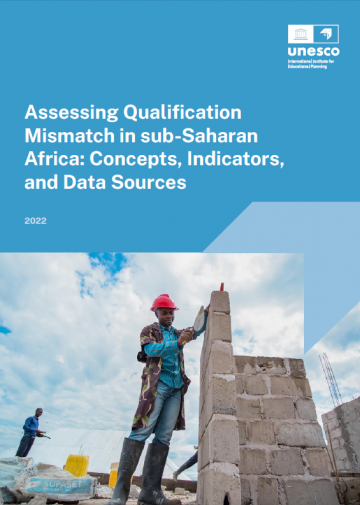Qualification mismatch in sub-Saharan Africa: A pervasive phenomenon insufficiently documented
Sub-Saharan African countries have limited labour market information systems and data resources. Most often they rely on labour force surveys or other household surveys with an employment module for labour market and qualification mismatch analyses. Skill-specific surveys are rare and limited to one-off data collection exercises.
Furthermore, informal employment is widespread in sub-Saharan African labour markets and traditional indicators like the unemployment rate fall short of providing a comprehensive picture of labour underutilization.
A recent report published by IIEP-UNESCO Dakar entitled: Assessing Qualification Mismatch in sub-Saharan Africa: Concepts, Indicators, and Data Sources aims to provide policy makers, development practitioners, and researchers with the necessary tools for analysing qualification mismatch in sub-Saharan Africa. It goes beyond existing frameworks by taking into account data constraints and the labour market context in the region.
Recent evidence indicates that sub-Saharan Africa along with southern Asia accounts for the regions most affected by qualification mismatch, mainly because of high incidences of under-qualification (ILO, 2019). Sub-Saharan Africa stands out as the region with the lowest levels of schooling but the highest returns to education.
Given data limitations, this report recommends conducting regular updates of qualification mismatch indicators based on the normative and empirical methods, to be disaggregated and analysed for various categories of individuals in order to evidence those most at risk. The report recommends a step-by-step approach to measuring qualification mismatches and anticipating future skills needs.
In the context of sub-Saharan Africa, it is also recommended to provide regular updates of core labour market indicators on labour underutilization and informal employment, broken down by qualification, occupation, and sector of activity. This basic setup allows documenting key elements of labour supply and demand and imbalances occurring in the labour market.



